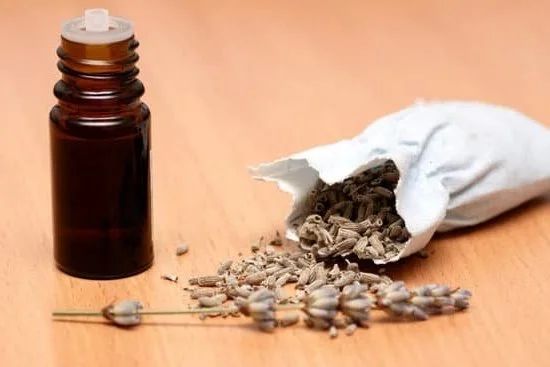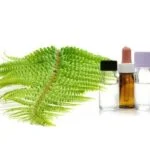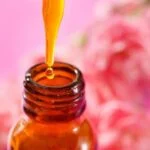Aromatherapy, a practice that has been enjoyed for centuries, is known for its ability to promote relaxation and well-being through the use of natural scents. But what happens when one does not have the sense of smell? Can aromatherapy still be effective without this vital sensory perception? This article aims to explore these questions and shed light on the relationship between aromatherapy and the sense of smell.
Aromatherapy involves the use of essential oils, which are derived from various plants, to enhance physical and mental health. These oils are typically inhaled or applied topically to evoke specific physiological and psychological responses. However, one may wonder if individuals with no sense of smell can experience the benefits that aromatherapy offers.
To better understand this topic, it is essential to delve into what aromatherapy entails and how it affects our overall well-being. By providing an overview of the basics and benefits of aromatherapy, we can establish a foundation for exploring how it can still be valuable even without a sense of smell. Additionally, understanding the science behind how smells affect our brain and body will provide insights into why aromatherapy has been esteemed for centuries.
While traditionally relying on scent as its primary modality, there are alternative approaches to aromatherapy that can be adapted for those without a sense of smell. These techniques aim to engage other senses or work around the absence of scent perception. By exploring these creative solutions and sharing real-life case studies and expert opinions, we can gather evidence on whether aromatherapy is indeed effective without the sense of smell.
What is Aromatherapy
Aromatherapy is a holistic healing practice that utilizes essential oils and plant extracts to promote physical, mental, and emotional well-being. It has been used for centuries in various cultures around the world. In recent years, aromatherapy has gained popularity for its potential therapeutic benefits.
The use of aromatherapy involves inhaling the aroma of essential oils or applying them topically on the skin. When inhaled, the scent molecules travel through the nasal passages and into the olfactory system, where they interact with receptors responsible for detecting smell. These receptors send signals to the brain’s limbic system, which is involved in memory, emotions, and mood regulation.
One of the key benefits of aromatherapy is its ability to promote relaxation and reduce stress. Certain essential oils such as lavender and chamomile have calming properties that can help soothe the mind and induce a sense of tranquility. For individuals with no sense of smell, alternative techniques can be employed to experience the benefits of aromatherapy.
- Topical Application: Essential oils can be diluted in carrier oils such as jojoba or coconut oil and applied directly to the skin. This allows absorption through the skin into the bloodstream, bypassing the need for inhalation.
- Massage Therapy: Aromatherapy massage involves combining essential oils with massage techniques to promote deep relaxation and relieve muscle tension. For individuals without a sense of smell, they can still benefit from the therapeutic touch and physical manipulation during a massage session.
- Aromatherapy Jewelry: Scented jewelry such as diffuser necklaces or bracelets can be used to carry essential oils close to the body throughout the day. Even though there may not be a detectable scent, some individuals report feeling a subtle change in their mood or energy when wearing these types of jewelry.
While the sense of smell is undoubtedly a significant component of aromatherapy, it is not the only way to experience its benefits. For individuals with no sense of smell, exploring alternative approaches can still provide support for overall well-being and potentially enhance their quality of life.
The Role of Smell
The Importance of Smell in Aromatherapy
Aromatherapy, as its name suggests, heavily relies on the sense of smell. The connection between aromatherapy and the sense of smell is fundamental to understanding how this practice works. Smell plays a crucial role in aromatherapy because when we inhale certain fragrances, they can trigger various physiological and psychological responses in our body. These responses range from relaxation and stress relief to improved mood and heightened focus.
Several studies have indicated that smells have a direct impact on the part of our brain responsible for emotions and memories, known as the limbic system. The limbic system includes structures like the amygdala and hippocampus, which are involved in emotional processing and memory formation. When certain aromatic compounds from essential oils are inhaled, they can interact with receptors in the nose and send signals to the limbic system.
How Smell Affects Emotions and Physical Well-being
The smells we encounter through aromatherapy can influence our emotions by activating specific neural pathways connected to our emotional experiences. For example, lavender scent is often associated with relaxation and can help reduce feelings of anxiety or stress. On the other hand, citrus scents like lemon or orange are known to be refreshing and energizing.
Smell also has an impact on our physical well-being. Certain essential oils used in aromatherapy possess antibacterial or antiviral properties that can support immune function. Additionally, some scents have been found to promote better sleep or alleviate symptoms related to headaches or respiratory issues.
Aromatherapy without Sense of Smell: Additional Approaches
For individuals who have no sense of smell due to conditions such as anosmia or hyposmia, experiencing aromatherapy through traditional inhalation methods may not yield the same results. However, alternative approaches can still allow these individuals to benefit from aromatherapy.
One approach is through topical application. Essential oils can be diluted and applied directly to the skin, allowing the body to absorb their beneficial compounds. Massage or gentle rubbing techniques can enhance the absorption process and stimulate circulation. In addition, some individuals with no sense of smell may still perceive certain tactile sensations or have residual olfactory memories, and these sensory experiences can contribute to the overall effects of aromatherapy.
Another alternative approach is through visual stimulation. Visual cues associated with aromatherapy, such as watching a flickering candle or observing a serene nature scene, can evoke similar relaxation responses in individuals who cannot perceive smells. This highlights the multidimensional nature of aromatherapy where other senses can indirectly influence its effectiveness.
While experiencing aromatherapy without the sense of smell may require adapting traditional methods, creative solutions and alternative approaches can still provide benefits for individuals who would otherwise miss out on this therapeutic practice.
The Science Behind Aromatherapy
The sense of smell plays a crucial role in the effectiveness of aromatherapy. When we inhale the aroma of essential oils, it triggers a response in our brain that can have various effects on our body and emotions. Understanding the science behind aromatherapy can shed light on why it is effective even for individuals with no sense of smell.
One way that smell affects the brain is through the olfactory system. When we inhale an aroma, thousands of olfactory receptors in our nasal passages detect the scent molecules and send signals to the olfactory bulb, which is connected to the limbic system. The limbic system is responsible for regulating emotions, memories, and behaviors. This connection explains why certain smells can evoke strong emotional responses or trigger memories.
In addition to the olfactory system, smell also influences our autonomic nervous system. This system controls our involuntary bodily functions such as heart rate, blood pressure, and digestion. Certain scents can stimulate or calm the autonomic nervous system, which can have physiological effects on the body. For example, lavender has been shown to have a calming effect by slowing down heart rate and reducing blood pressure.
Even though individuals with no sense of smell may not experience these effects directly through their olfactory system, there is still potential for aromatherapy to work for them. Research suggests that other sensory pathways such as touch and sight can influence how we perceive scent and its effects on our body and mind. For example, seeing a lavender plant or feeling its soft petals may elicit a relaxation response even without smelling it directly.
Aromatherapy Techniques for Individuals with No Sense of Smell
Aromatherapy is a practice that relies heavily on the sense of smell to provide therapeutic benefits. However, what options are available for individuals who have no sense of smell? In this section, we will explore alternative approaches to aromatherapy techniques for those without the ability to detect scents.
One alternative approach for individuals with no sense of smell is through the use of touch. Aromatherapy massage, also known as aromassage, involves applying essential oils directly onto the skin and using massage techniques to promote relaxation and healing.
This tactile approach focuses on stimulating the body’s response to touch rather than relying solely on the scent of the oils. Research has shown that aromassage can still provide numerous benefits, such as reducing anxiety and relieving muscle tension, even without the sense of smell.
Another option is through inhalation methods that do not rely solely on smelling the essential oils. One such method is called humidification, which involves adding essential oils to a humidifier or diffuser and allowing them to disperse into the air.
Although individuals with no sense of smell may not be able to detect the aroma themselves, they can benefit from the therapeutic properties released into the air. The molecules from the essential oils can still be absorbed into the respiratory system, providing potential benefits for respiratory ailments or improving mood.
Lastly, visual stimulation can be incorporated into aromatherapy practices for those without a sense of smell. Some individuals create personal visual rituals by utilizing brightly colored objects, images, or videos related to their desired state of well-being while practicing aromatherapy techniques. This visual focus can help engage other senses and bring about a similar therapeutic effect as traditional aromatherapy practices.
While these alternative approaches may require some adjustments compared to traditional aromatherapy methods that rely heavily on scent, they offer hope and possibilities for individuals with no sense of smell to still derive benefits from this holistic practice. With further exploration and understanding, more tailored techniques can be developed to ensure that aromatherapy is accessible to everyone, regardless of their ability to smell.
Adapting Aromatherapy for Individuals with Anosmia
Individuals with anosmia, or the loss of the sense of smell, may think that they cannot participate in or benefit from aromatherapy. However, there are several creative solutions and workarounds that can allow individuals with anosmia to still engage in and experience the benefits of aromatherapy. This section will explore some of these adaptations and provide useful strategies for individuals with no sense of smell to engage in aromatherapy effectively.
One alternative approach for individuals with anosmia is to focus on the tactile aspect of aromatherapy. This involves using different textures and sensations to create a sensory experience that can mimic the effects of certain essential oils. For example, massage oils can be used for their soothing properties, providing relaxation and stress relief through touch rather than scent. Additionally, diffusing essential oils into a room can create a calming ambiance, even if the individual cannot directly smell them.
Another technique that can be effective for individuals with anosmia is visualizing the scents. By using imagery and visualization techniques, one can mentally recreate the experience of smelling certain scents without actually being able to detect them physically. This can involve imagining the fragrance based on memories or descriptions from others. Visualization exercises can help evoke positive emotions and relaxation similar to those experienced through traditional aromatherapy practices.
In addition to tactile and visualization techniques, incorporating other senses such as taste can also enhance the effects of aromatherapy for individuals with anosmia. Certain essential oils used in aromatherapy are safe for consumption when diluted properly. By adding a few drops of these oils to food or beverages, individuals with no sense of smell can still benefit from their therapeutic properties through taste.
Overall, while individuals with anosmia may not be able to fully experience traditional aromatherapy practices, there are various adaptations and creative solutions available to ensure they can still enjoy its benefits. By focusing on tactile experiences, visualizations, and incorporating other senses such as taste when appropriate, individuals with no sense of smell can still engage in aromatherapy effectively.
| Adaptation | Description |
|---|---|
| Tactile Aromatherapy | Focuses on using different textures and sensations to create a sensory experience that mimics the effects of certain essential oils. |
| Visualizing Scents | Mentally recreating the experience of smelling certain scents through imagery and visualization techniques. |
| Incorporating Taste | Adds a few drops of safe-to-consume essential oils to food or beverages to benefit from their therapeutic properties through taste. |
Case Studies
Case Study 1: Amy’s Experience
Amy, a 35-year-old woman, has been living with anosmia, the inability to perceive smell, since birth. She was initially skeptical about whether aromatherapy could have any positive effects on her well-being due to her condition. However, after researching alternative approaches and seeking advice from aromatherapy professionals, she decided to give it a try.
Amy started incorporating aromatherapy into her daily routine by using essential oils in baths and massages. Although she couldn’t personally experience the scents, she noticed that she felt more relaxed and calm after each session. The techniques used in aromatherapy helped Amy achieve a sense of mindfulness and relaxation that enhanced her overall mental and emotional well-being.
Case Study 2: John’s Journey
John, a 50-year-old man who lost his sense of smell due to a car accident several years ago, was searching for alternative therapies that could improve his quality of life. He stumbled upon aromatherapy while researching non-traditional approaches for individuals with no sense of smell.
To adapt the practice of aromatherapy for himself, John explored different tactile methods such as applying oil blends topically or inhaling them directly from containers without relying on scent. He documented his experiences over several months and found that he experienced improvements in his mood and reduced anxiety levels through these techniques.
Case Study 3: Sarah’s Surprise
Sarah had anosmia for most of her life but never considered trying aromatherapy until she attended an awareness workshop specifically designed for individuals with no sense of smell. During the workshop, participants were encouraged to focus on the physical sensation and texture of essential oils rather than their aroma.
To Sarah’s surprise, she discovered that even without the perception of smell, she experienced a remarkable sense of calmness and clarity during the workshop. This newfound connection to aromatherapy motivated her to integrate it into her daily life. Using essential oils in her skincare routine and practicing self-massage techniques, Sarah noticed improved relaxation and feelings of well-being.
These case studies illustrate how individuals with no sense of smell have found value in the practice of aromatherapy. While their experiences may vary, they highlight the diverse ways in which individuals can adapt aromatherapy techniques to suit their unique needs and preferences.
Expert Opinions
Aromatherapy professionals play a crucial role in guiding individuals who lack the sense of smell to still benefit from this practice. These experts have extensive knowledge and experience in adapting aromatherapy techniques for individuals with anosmia, offering valuable insights on the efficacy of aromatherapy without the sense of smell.
One common approach suggested by aromatherapy professionals is to focus on the physical and physiological effects of essential oils. While scent is an integral part of traditional aromatherapy, experts believe that the therapeutic benefits can still be obtained through other sensory channels. For example, topical application or massage using essential oils can stimulate blood circulation, relax muscles, and promote overall well-being even without the olfactory perception.
Furthermore, experts highlight that visual cues can enhance the effectiveness of aromatherapy for individuals with no sense of smell. The sight of essential oils being used during a therapy session or the vibrant colors of plants and flowers used in preparations can evoke positive emotions and create a sense of relaxation or invigoration. This visual stimulation complements other modalities like touch or inhalation techniques, providing a holistic experience.
In addition to adapting existing aromatic practices, some aromatherapy professionals also suggest alternative approaches for individuals with no sense of smell. These may include incorporating other sensory elements such as sound therapy or guided imagery during an aromatherapy session. By engaging multiple senses, individuals are able to fully immerse themselves in the experience and reap its benefits beyond just scent.
| Insights | Efficacy |
|---|---|
| Aromatherapy professionals offer valuable guidance on adapting techniques for individuals with no sense of smell. | While scent is important, therapeutic benefits can still be obtained through other sensory channels. |
| Experts suggest focusing on physical and physiological effects of essential oils. | Visual cues can enhance the effectiveness of aromatherapy for individuals with no sense of smell. |
| Alternative approaches such as sound therapy or guided imagery can be incorporated into aromatherapy sessions. | A holistic experience engaging multiple senses helps individuals reap benefits beyond scent. |
Personal Experiences
Although aromatherapy is often associated with the sense of smell, there are individuals who have successfully incorporated this practice into their lives despite the lack of smell. These personal experiences shed light on the potential benefits and alternative approaches for individuals with no sense of smell.
One individual, Sarah Miller, shares her journey with aromatherapy after losing her sense of smell due to a medical condition. Initially skeptical, Sarah was pleasantly surprised by the positive effects she experienced.
She found that even without being able to perceive the scent, the essential oils used in aromatherapy still had a calming effect on her mind and body. Through trial and error, Sarah experimented with different techniques such as topical application and steam inhalation to enhance her experience with aromatherapy.
Another individual, Michael Johnson, discovered that visual cues and tactile sensations could heighten his experience with aromatherapy. He would often watch videos or look at images related to nature while diffusing essential oils in his home. This combination of visual stimulation and aroma helped him feel more connected to nature and provided a sense of relaxation. Additionally, Michael found that incorporating massage therapy alongside aromatherapy enhanced his overall well-being.
These personal experiences highlight the creativity and adaptability required when using aromatherapy without a sense of smell. By exploring alternative approaches such as visual cues, tactile sensations, or combining it with other therapies like massage, individuals can still reap the potential benefits despite their anosmia. It emphasizes that although the sense of smell plays an integral role in traditional aromatherapy practices, there are alternative methods available for those who may not have this ability.
It is important to note that personal experiences vary greatly among individuals. What works for one person may not work for another. However, these testimonials provide valuable insights into the possibilities and adaptations that can be made when practicing aromatherapy without the sense of smell. Further research and exploration are necessary to fully understand the efficacy of aromatherapy for individuals with anosmia, but these personal accounts offer hope and inspiration for those seeking alternative approaches for their well-being.
Conclusion
In conclusion, the findings of this article underscore the potential benefits of aromatherapy for individuals with no sense of smell. While the traditional approach to aromatherapy heavily relies on the sense of smell to elicit therapeutic effects, alternative techniques have been developed to cater to those with anosmia or other smell-related conditions. Through creative solutions and workarounds, individuals without a sense of smell can still engage in aromatherapy and potentially experience its positive effects on their well-being.
The science behind aromatherapy reveals that the sense of smell plays a crucial role in its efficacy. The olfactory system sends signals to the brain, triggering various physiological and psychological responses. However, even without olfactory stimulation, individuals can still benefit from alternative approaches such as topical application or exposure to visual cues associated with specific scents.
Real-life case studies have shown promising results for individuals with no sense of smell who have engaged in aromatherapy. Despite their inability to perceive odors, these individuals reported improvements in mood, relaxation, pain relief, and overall well-being after incorporating aromatherapy into their routines. These testimonies provide valuable insights into the potential efficacy of aromatherapy beyond its traditional reliance on scent perception.
It is important for further exploration and research into aromatherapy for individuals with no sense of smell. By understanding how alternative approaches can effectively stimulate other senses or capitalize on cognitive associations between scents and emotions, we can unlock new possibilities for utilizing aromatherapy as a complementary therapy for a broader range of individuals.
Additionally, expert opinions from professionals in the field can guide future endeavors and shed light on best practices for adapting aromatherapy techniques to cater to those without a sense of smell. With continued investigation and innovation in this area, we can enhance accessibility and inclusivity within the field of aromatherapy, ultimately benefiting individuals who may not benefit from traditional approaches due to their lack of olfactory perception.
Frequently Asked Questions
Would aromatherapy be useful to people who have lost their sense of smell from COVID?
Aromatherapy may not be directly useful to people who have lost their sense of smell from COVID, as they are unable to perceive the scents. However, it can still offer potential benefits in terms of relaxation, stress relief, and emotional well-being.
Inhalation of essential oils through aromatherapy has been known to have an impact on the limbic system in the brain, which controls emotions and memories. By employing other senses like touch and sight, individuals who have lost their sense of smell can still experience the therapeutic effects associated with aromatherapy.
How can I regain my sense of smell?
Regaining one’s sense of smell after losing it can vary from person to person and depends on the underlying cause of the anosmia (loss of smell). If the anosmia is temporary and caused by a viral infection such as COVID-19, regaining smell usually occurs as part of the natural healing process over time. Engaging in olfactory training exercises could potentially aid in speeding up recovery by stimulating the nasal passages and encouraging nerve regeneration.
These exercises involve repeatedly smelling various scents and trying to identify them accurately. It is important to consult with a healthcare professional for guidance tailored to individual circumstances.
Why can’t I smell my essential oils?
There could be several reasons why you might not be able to smell your essential oils effectively. Firstly, it is possible that your olfactory receptors may be temporarily impaired or blocked due to factors such as congestion or allergies. Clearing any nasal congestion through remedies like steam inhalation or decongestant sprays prior to using essential oils might enhance their effectiveness on your sense of smell.
Additionally, sensory adaptation is another factor that affects our ability to perceive scents consistently over time – our brain becomes less responsive when exposed to an odor continuously. Taking breaks between inhaling different scents or utilizing scent diffusers that intermittently release fragrance could help overcome this adaptation phenomenon and allow you to experience stronger aromas.

Are you looking for a natural way to improve your health and wellbeing?
If so, aromatherapy may be the answer for you.





